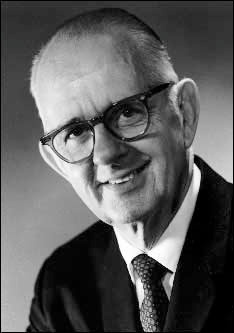Converging Pathways of Pain Research at NIDCR
Introduction
Pain - Beginnings of Pain Research at NIDCR
- and the Dentist
- Pain Ron Dubner and the "Lone Rangers"
Pain - A New Multi-Disciplinary Unit
Pain - Behavioral & Neural Responses to Pain
- The Monkey's Informed Choices
- Findings from the Behaving Monkey Studies
Pain - Testing Old and New Drugs for Pain
- Differential Measurement of Pain Perception
- Testing Old and New Drugs for Pain
Pain - A Laboratory Model For Clinical Pain
Pain - The Biochemistry & Genetics of Pain
- Mapping the Spinal Cord
- The Dynorphin Connection
- Future Directions
Pain - Epilogue
Pain - Exhibit Index
...
Pain is a universally known and feared human condition, yet surely it is one of the least understood. Within this century it has been a philosophic problem, an enigma of neurophysiology, a psychological puzzle, a challenge to anesthesiologists, oncologists, nurses, clinicians of all kinds; and much of what we now think we know about pain still seems contradictory and paradoxical.
Painting
Here is another puzzle: how did the most versatile and productive pain research unit at NIH establish itself in the National Institute of Dental Research?
Pain and the Dentist
| Div | ||||||||||
|---|---|---|---|---|---|---|---|---|---|---|
| ||||||||||
|
| Div | ||||||||||
|---|---|---|---|---|---|---|---|---|---|---|
| ||||||||||
|
Problems with general anesthesia in dentistry, 1960
- Lack of training and experience
- Lack of staff
- Lack of data about agents used
...
The results of Driscoll's studies in the late 1950s and early 1960s provided the first data on the efficacy and risks of dental anesthesia; unfortunately, much of the data were never written up for publication and the records were finally lost to the need for space when the Pain Branch expanded in the 1970s.
Ron Dubner and the "Lone Rangers"
In 1964, Ronald Dubner returned to NIH from the University of Michigan. Dubner had worked in the Clinical Center from 1958 to 1961 as a young Dental Officer in the Commissioned Corps; there he had discovered his interest and talent for research, and successfully applied for NIH support for his Michigan doctoral studies in neurophysiology. Seymour Kreshover , Scientific Director of the Institute, was a major supporter of the young researcher and his plans to establish a basic neuroscience laboratory at NIDR.
...
Seymour Kreshover
Photograph of Patrick Wall and Ronald Melzack
Patrick Wall [l] and Ronald Melzack [r]
Photograph of Ron Dubner, Barry Sessle, and Eigld Moller
Ron Dubner [l] and Barry Sessle [r] with colleague Eigild Moller at International Association for Dental Research, mid-1970s
A New Multi-Disciplinary Unit
At this point, Dubner decided that he needed to "pick the brain" of a leader in the field and arranged a year's sabbatical at University College London with Patrick Wall (1970-71). He returned from London to an expanded and growing Section. Rhyuji Sumino had arrived from Japan to begin several years of collaborative work; he would soon be joined by Donald Price and Jimmy Hu . NIDR was reorganizing both its intramural and its extramural programs; as part of this initiative, Ed Driscoll played a key role on the Institute's Ad Hoc Advisory Committee on Pain Control (1971-72).
...
John Bonica at the podium.
The Monkey's Informed Choices
The awake behaving monkey experiments were among the most important undertaken by the Neurobiology and Anesthesiology Branch at NIDR in the 1970s and 1980s. These were real time observations of the ways in which an animal processed, reacted to, and acted on complex environmental information, including a noxious stimulus (a contact thermode placed near the lip), while microelectrode recordings were taken of the neuronal activity in the trigeminal brainstem. Originally designed by Ron Dubner and Ralph Beitel, the behavioral studies continued through several generations of postdocs and lab workers, including Catherine Bushnell, Gary Duncan, Ron Hayes, Donna Hoffman, Daniel Kenshalo, William Maixner, and Jean-Marie Oliveras .
...
An illustrationof a monkey performing tasks. The drawing identifies the thermode, the readylight; button, and the visual cue.
An illustration of a monkey performing tasks. The drawing identifies the thermode, the ready light & button, and the visual cue
The Monkey's Informed Choices
The awake behaving monkey experiments were among the most important undertaken by the Neurobiology and Anesthesiology Branch at NIDR in the 1970s and 1980s. These were real time observations of the ways in which an animal processed, reacted to, and acted on complex environmental information, including a noxious stimulus (a contact thermode placed near the lip), while microelectrode recordings were taken of the neuronal activity in the trigeminal brainstem. Originally designed by Ron Dubner and Ralph Beitel, the behavioral studies continued through several generations of postdocs and lab workers, including Catherine Bushnell, Gary Duncan, Ron Hayes, Donna Hoffman, Daniel Kenshalo, William Maixner, and Jean-Marie Oliveras .
...
Ronald Dubner, 1970s Photograph courtesy of NIDCR Public Information Office
Apparatus built by Fred Brown to administer thermal stimuli and record nerve impulses.
Apparatus built by Fred Brown to administer thermal stimuli and record nerve impulses
References
1 The National Institute of Dental Research (NIDR) was renamed the National Institute of Dental and Craniofacial Research (NIDCR) on October 21, 1998.
...



